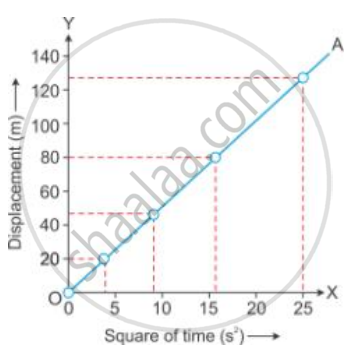Advertisements
Advertisements
प्रश्न
A body falls freely from a certain height. Show graphically the relation between the distance fallen and square of time. How will you determine g from this graph?
उत्तर

The value of acceleration due to gravity (g) can be obtained by doubling the slope of the S - t2 graph for a freely falling body.
संबंधित प्रश्न
Give one example of the following motion:
Uniform retardation
A car travels with uniform velocity of 25 m s-1 for 5 s. The brakes are then applied and the car is uniformly retarded and comes to rest in further 10 s. Find:
- The distance which the car travels before the brakes are applied,
- Retardation and
- The distance travelled by car after applying the brakes.
Explain the following concept in your own words with everyday examples:
Acceleration
Diagram is given below shows velocity – time graph of car P and Q, starting from the same place and in the same direction. Calculate the Acceleration of car P.

A body falls towards the earth. Does it have positive or negative acceleration?
The speed of a car increases from 10 km/h to 64 km/h in 10 seconds. What will be its acceleration?
The distance covered by a body is directly proportional to the square of the time elapsed. What can you say about its acceleration?
State if the following situation is possible:
A body moving horizontally with an acceleration in vertical direction.
State if the following situation is possible:
A body moving with a constant velocity in an accelerated motion.
Assertion: A positive acceleration of a body can be associated with the slowing down of the body.
Reason: Acceleration is a vector.
